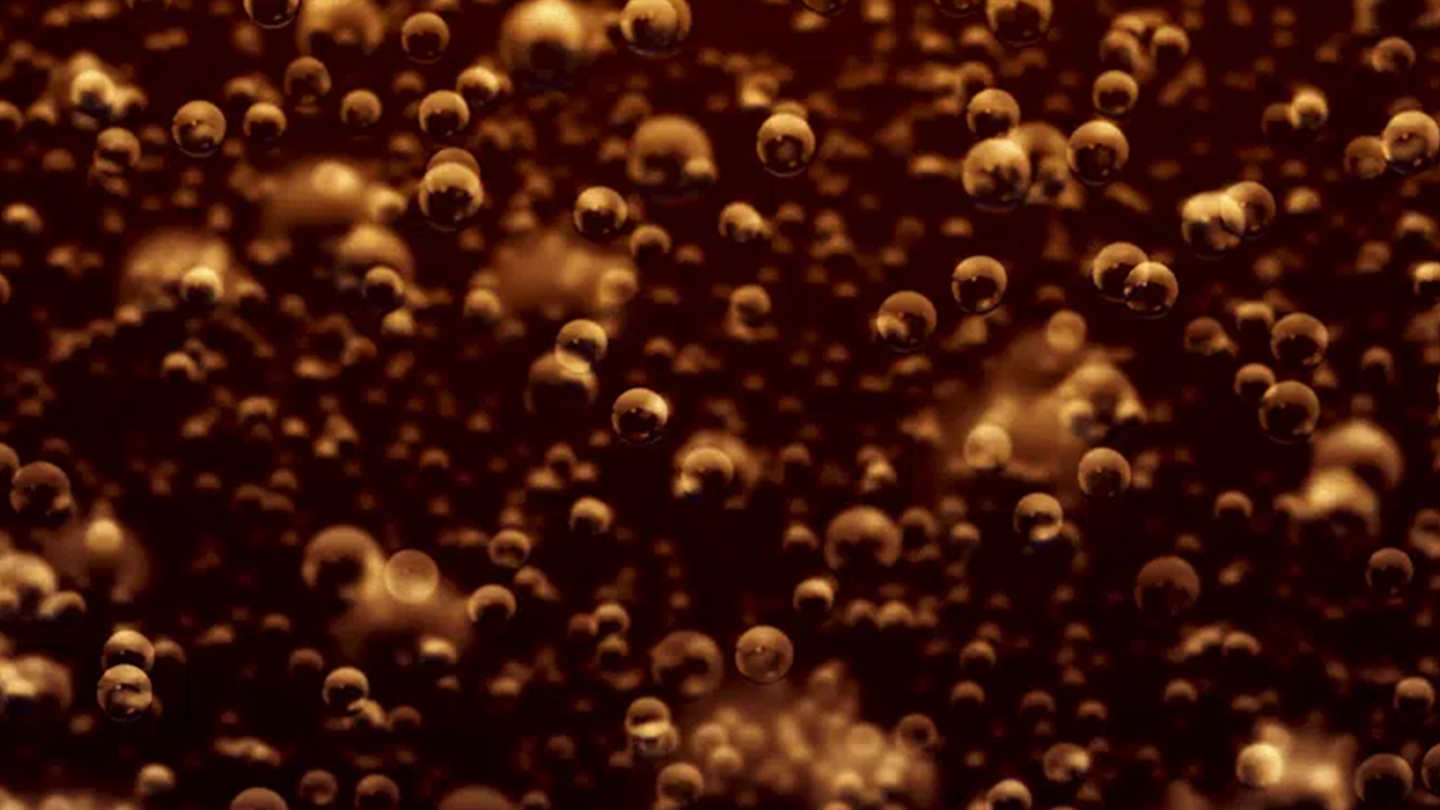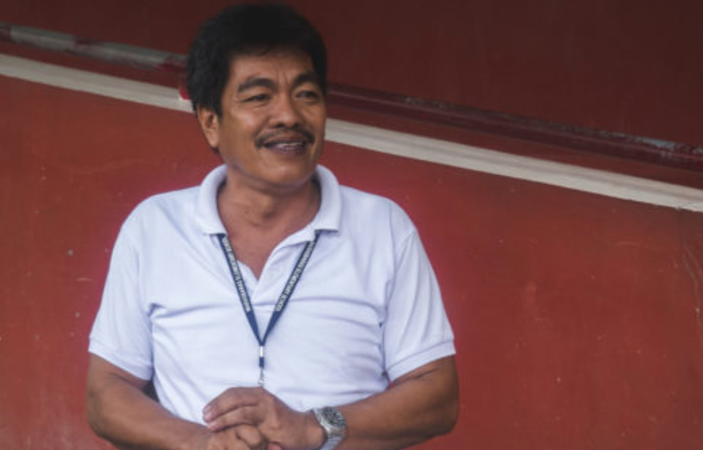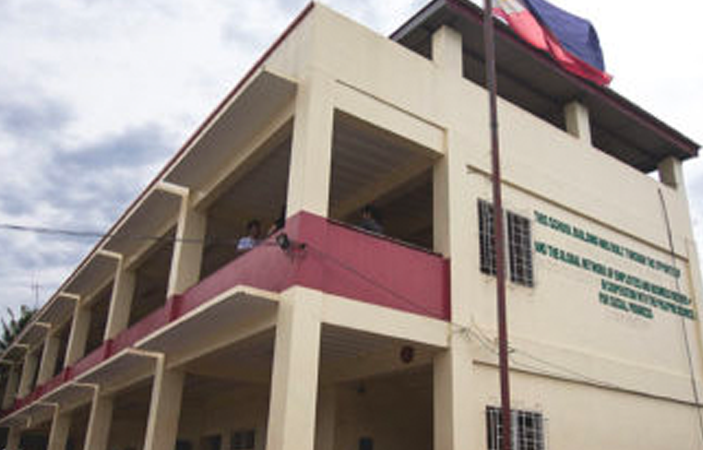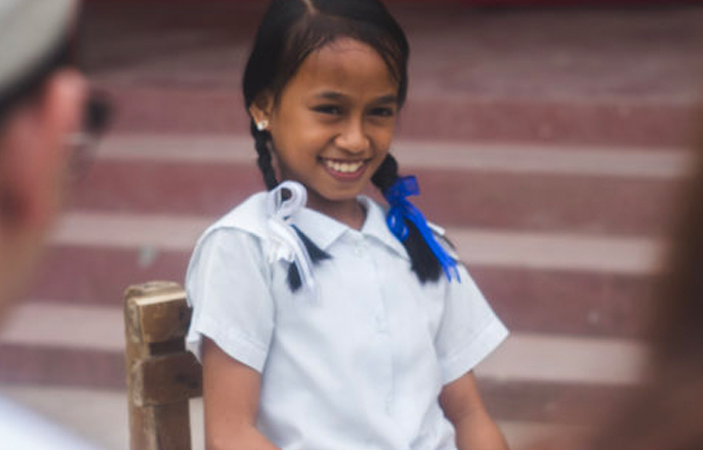
120+ schoolhouses
08-24-2022

Red is the New Rainbow
The skies were dark even when the sun was just about to rise and the wind was blowing hard it could actually take the galvanized roof when Shannel woke up that morning. She then took a seat, turned on the radio, and eagerly listened to the news while the super typhoon Haiyan struck the surface of Tacloban City.
The voice of the 11-year old Shannel Gajerana was quite trembling yet ironically calm when she narrated the devastation brought by the cyclone last November 8, 2009.
“In the morning, while we were sleeping, we felt the wind getting stronger so we hid under the table before we transferred to the cemented house next door,” she said as she recalled that very moment three years ago.
She admitted that they took the storm surge advisory lightly because most of them did not understand what it might bring. Living with just her mother and two siblings, Sharina admitted they had to leave their home to keep themselves safe.
The water rose quickly and lasted for more than an hour leaving roofless houses, torn down walls, and a wrecked city.
Tricia Mae Corbilla and Michael Funcion, both grade six students, were among those who lost their homes during the typhoon.
“We evacuated to the nearest Barangay Hall. We stayed there. When we went back to check our house after the typhoon, our roof was already gone,” Michael recalled with a shaky tone and tears almost falling from his eyes.
“We were really scared. It was as if God was mad because our trash went back to us. I thought the world was going to end,” Tricia said with an obvious mixture of sadness and fear in her voice.
“Today, even with just Signal No. 1, we all want to evacuate already,” she added defining the trauma she and some of her classmates went through.
Tito Pajeres, the officer-in-charge of Marasbaras Elementary School in 2009, agreed that the aftermath of super typhoon Yolanda was truly unimaginable. Their school was not an exception.
“After the typhoon, the school was totally damaged. The rooms were totally devastated. It was not even used as an evacuation center because it was flooded. The water reached half of the school gate,” he mentioned describing the intensity of the typhoon.
The school was asked to resume a month after the havoc and that was when the trauma for both the students and faculty was realized.
“During the first three days of our resume, there were times that they were crying. We shared the same experience,” Pajeres recalled, referring to some students and teachers who lost their homes and properties.
“We even lost one student. He was a grade one pupil. He drowned in the flood. He was supposed to be in grade four now,” the teacher sadly added.
Yolanda may have washed off a lot of treasured lives and properties that left the people of Tacloban in a state of trauma – but not the hope in their hearts and their passion in achieving their goals.
The students and faculty of Marasbaras Elementary School found the rainbow after the storm in the construction of the first typhoon-resilient Little Red School House (LRS) in their campus.

“I wasn’t really expecting that it will be given to us because they told me they are choosing among three options. It really was a heard prayer,” Pajeres said remembering the negotiation between him and the Coca Cola Foundation Philippines Inc.
The LRS built in Marasbaras Elementary School was a two-storey building with a helipad and six classrooms which are fully equipped with chairs, tables, blackboards, and comfort rooms – differing from the usual multi-grade LRS located in remote areas.

Aside from the building’s uniqueness in terms of structure, Marasbaras Elementary School also boasts students with the purest passion and motivation for learning.
Pajeres proudly said the construction of the LRS brought an increase in their enrollees and even in attendance because students find their newly-built classrooms more conducive for learning.
“We do not have to discuss our lessons outside. The classrooms were already enough to accommodate everyone. We do not have to endure the heat. It is more comfortable for us now,” Michael said shyly but with a grin.
“Before, our school was very dirty. But now, it is already pleasing to the eyes. Coca Cola gave this place color,” Shannel added with a genuine smile and sparkle in her eyes.
The LRS project helped not only in the rehabilitation of the school but also in the kneading of its students bright futures. Pajeres proudly said that the Coca Cola Foundation project played a vital role in bringing back the kids’ enthusiasm for learning.
“With the construction of the Little Red School House, I realized that we are not alone in this battle. There are still people who are willing to offer everything to help us. We are very grateful that our school was chosen."
Truly, the residents of Barangay Marasbaras found their rainbow after the destructive storm. But this time, it is quite different, red, and unique.
